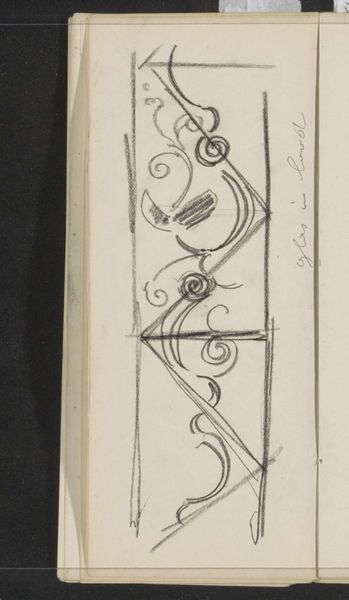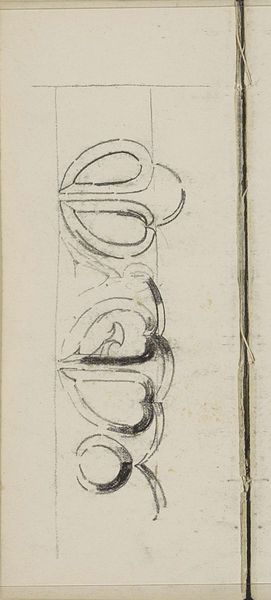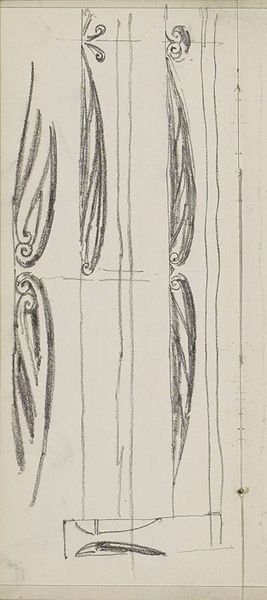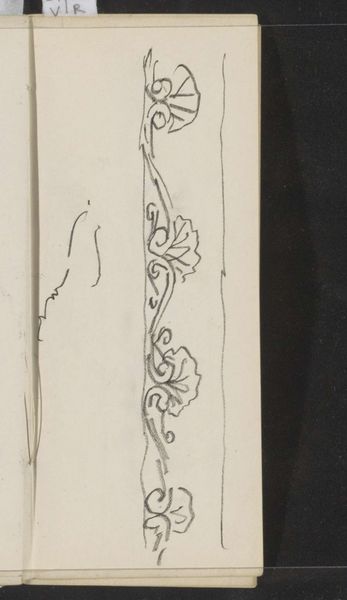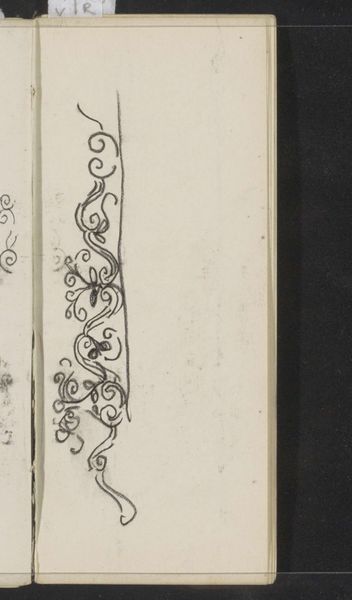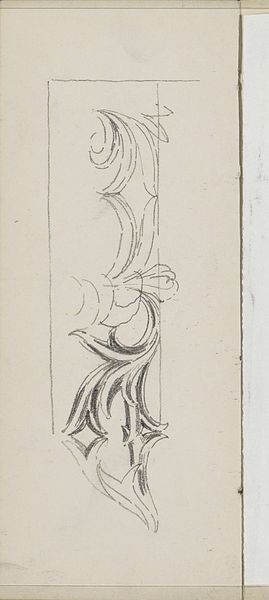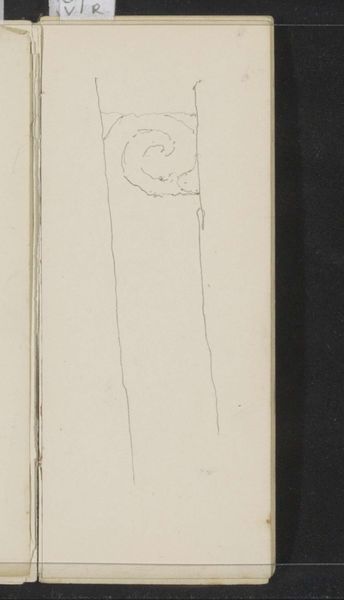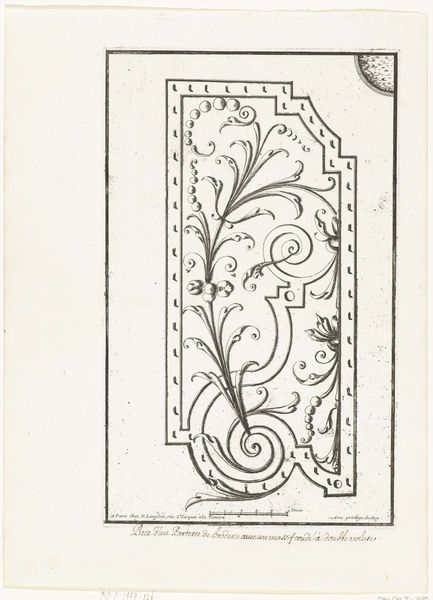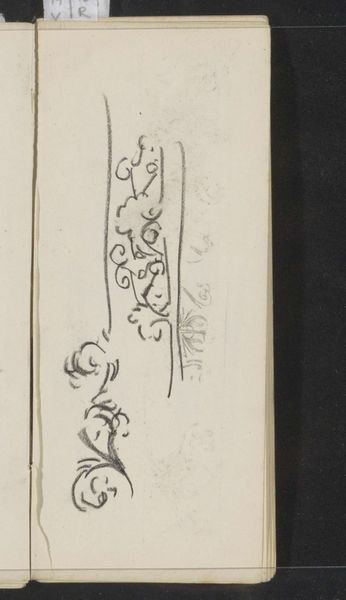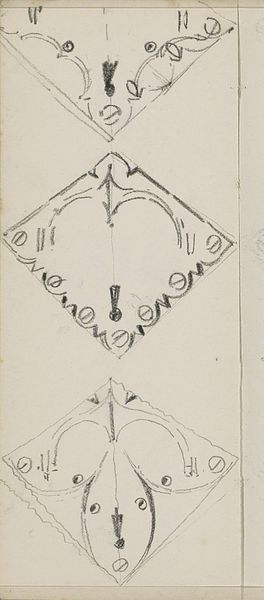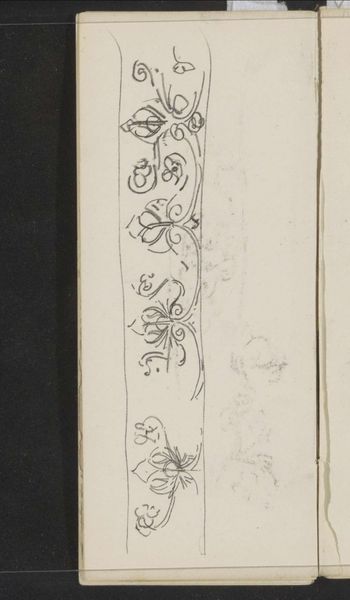
drawing, ornament, paper, pencil
#
drawing
#
ornament
#
paper
#
geometric
#
pencil
Copyright: Rijks Museum: Open Domain
Editor: So, this is “Ornamenten met lussen,” or “Ornaments with loops,” by Gerrit Willem Dijsselhof, created sometime between 1876 and 1924. It's a pencil drawing on paper. I find its simplicity striking. The repeated looping patterns are almost hypnotic. How do you interpret this work, particularly in its historical context? Curator: This drawing, while seemingly simple, is incredibly evocative when placed within its historical and social milieu. Dijsselhof was working during a period of immense social upheaval, with industrialization rapidly changing society. How do you think a focus on ornamentation and these repeated geometric patterns might relate to those shifts? Editor: Hmm, maybe a yearning for order and beauty in a chaotic time? Or a retreat from the harsh realities of industrial life? Curator: Exactly. The Arts and Crafts movement, which heavily influenced Dijsselhof, reacted against industrialization by emphasizing handcraftsmanship and traditional techniques. These looping ornaments, created meticulously by hand, can be seen as a quiet act of resistance against the alienation of mass production. They reassert the value of the individual artisan. Consider also the use of ornament in other cultures - historically who has had access to these designs? What materials would these designs traditionally be displayed on? Editor: That's fascinating. So, the drawing is not just a design, but a statement about labor and value? Thinking about access, historically the creation and ownership of such objects may only have been afforded to certain populations. Curator: Precisely. And think about the accessibility of the drawing medium itself - it democratizes this sort of beauty, making ornament available, perhaps, to people for whom expensive craft objects may have remained permanently out of reach. What implications do you think that has? Editor: That definitely reframes how I see this piece. It's not just a pretty design; it carries layers of social and political meaning related to production, class, and access. Curator: Indeed. It reminds us that even seemingly decorative pieces can be powerful tools for social commentary and change. Editor: I'll definitely be thinking about ornament and its socio-political contexts differently from now on. Thanks!
Comments
No comments
Be the first to comment and join the conversation on the ultimate creative platform.

